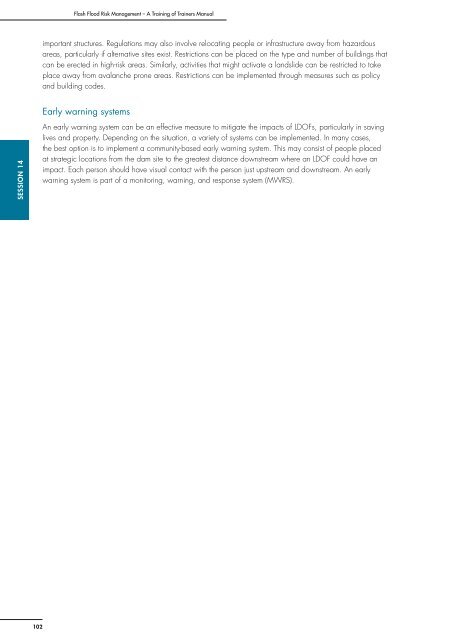Flash Flood Risk Management â A Training of Trainers ... - ReliefWeb
Flash Flood Risk Management â A Training of Trainers ... - ReliefWeb
Flash Flood Risk Management â A Training of Trainers ... - ReliefWeb
You also want an ePaper? Increase the reach of your titles
YUMPU automatically turns print PDFs into web optimized ePapers that Google loves.
<strong>Flash</strong> <strong>Flood</strong> <strong>Risk</strong> <strong>Management</strong> – A <strong>Training</strong> <strong>of</strong> <strong>Trainers</strong> Manual<br />
important structures. Regulations may also involve relocating people or infrastructure away from hazardous<br />
areas, particularly if alternative sites exist. Restrictions can be placed on the type and number <strong>of</strong> buildings that<br />
can be erected in high-risk areas. Similarly, activities that might activate a landslide can be restricted to take<br />
place away from avalanche prone areas. Restrictions can be implemented through measures such as policy<br />
and building codes.<br />
Early warning systems<br />
Session 14<br />
An early warning system can be an effective measure to mitigate the impacts <strong>of</strong> LDOFs, particularly in saving<br />
lives and property. Depending on the situation, a variety <strong>of</strong> systems can be implemented. In many cases,<br />
the best option is to implement a community-based early warning system. This may consist <strong>of</strong> people placed<br />
at strategic locations from the dam site to the greatest distance downstream where an LDOF could have an<br />
impact. Each person should have visual contact with the person just upstream and downstream. An early<br />
warning system is part <strong>of</strong> a monitoring, warning, and response system (MWRS).<br />
102

















